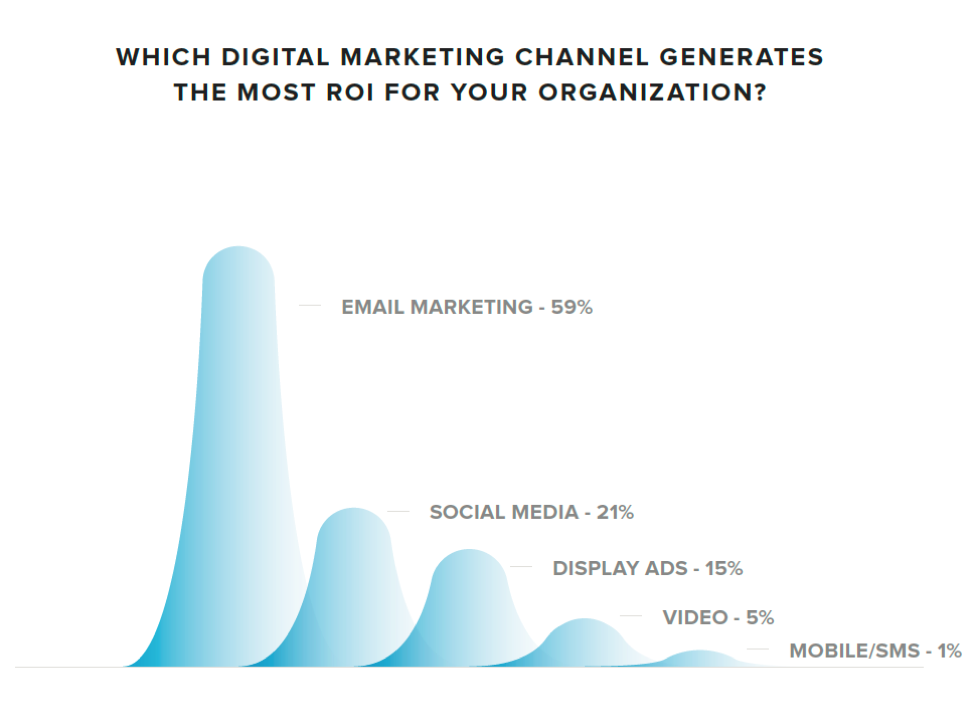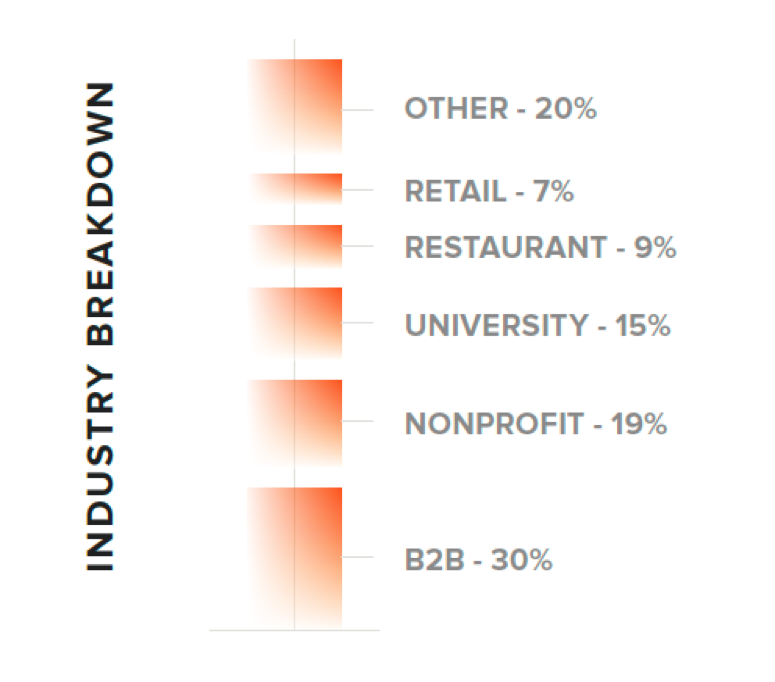Keeping up-to-date on the newest marketing tools and strategies is a full-time job in it of itself. But don’t forget about mastering the basics: Email is a useful channel for engagement.
To that end, Emma, a marketing automation platform, released their annual Email Marketing Industry Report for 2018, which contains an abundance of facts and statistics. We’ve taken the time to go through the 23-page report to give you some of the highlights on the latest trends and challenges in the industry.
Email Marketing Still Generates the Most ROI
According to Emma, email marketing is the most successful digital marketing channel and it’s worth the investment:
1. When asked which digital marketing channel generated the most ROI for their organization, 59 percent of marketers saw the most ROI from email (pg. 5).
2. Because of this, 25 percent of marketers plan to significantly increase their spending on email marketing (pg. 5).

How to Enhance Your Email Results
If you’re not getting the results you’d hoped for with your email marketing strategy, there’s three things you can try. First, according to Emma, work on growing your contact list. We suggest social, Google AdWords, and always putting a subscription option on other forms, like your contact us forms or white paper offerings.
For more traditional display advertising, Adroll now offers native advertising units, which makes for a perfect experiment to grow your list.
Second, ensure that your email template is mobile-friendly. Most consumers are reading and sending emails directly from their smartphones.
Third, each email you send should have a clear call-to-action button.
Focus on Current Customers
While growing a list is important, keep in mind that your current customers are much more valuable than potential customers. They’re typically more likely to engage with your content and buy your products or services. When you do get that coveted subscription, remember that first impressions are lasting impressions. To make a lasting impression, introduce your organization and let your consumers know what type of content to expect from you. Then instead of sending out potentially irrelevant mass emails, send your customers content related to their actions. Lastly, check to see how they responded and adjust accordingly.
Segmentation is Essential
List segmentation leads to noticeable results:
1. Of the email marketers that practice list segmentation, 39 percent see better open rates (pg. 12).
2. 28 percent of email marketers that segment see lower opt-out and unsubscribe rates (pg. 12).
3. Not only does segmentation exhibit higher open rates and lower opt-out rates, but 24 percent of email marketers also see better email deliverability (pg. 12).
Try segmenting by location, engagement, and purchase history to send the most relevant messaging to your consumers.

A/B Test and Automate
Testing continuously is one of the best ways to improve your results, yet over half (53 percent, to be exact) of the marketers surveyed never A/B test their emails. Making small variations to emails and noting what performed better will help you improve your strategy. Testing different subject lines is a great place to start. Try being more informal, or ask a question as your subject. How does that compare to the last emails you’ve sent?
Automation is another important tactic. Our tips? Remember that automation does not necessarily mean less work. There’s a lot of planning involved, but once you’re set up, you will have a series of emails triggered by your audience’s behavior. For example, if they download a product guide, send them a follow up email with your sales contacts. If they subscribe to your blog, send them a series of emails introducing them to the types of content they can expect to receive.
However, don’t make the common mistake of ‘setting and forgetting’ your triggered emails. You want to review your campaigns from time to time to make sure content is still relevant, and that everything fires off correctly. (Another item not to forget: GDPR.)
 B2B Marketers
B2B Marketers
Of the marketers surveyed, B2B marketers stood out in a few key results:
1. Looking at the email marketing industry as a whole, 30 percent of the organizations are B2B marketers (pg. 2).
2. Of the B2B marketers, 30 percent plan to increase their spending on email marketing during the next year (pg. 9).
3. 68 percent of B2B marketers said email is their most effective digital channel (pg. 9).
4. With regards to how they measure their success, 82 percent of B2B marketers say generating leads or sales is the most important indicator of success (pg. 9).
5. Surprisingly, only 47 percent of B2B marketers are using email automation (pg. 9).
There’s a lot of power behind email marketing, and adjusting to its latest tools and strategies will never go away. But there’s still room to start using email to its full potential. To learn more, you can download the full report here.
Caitlin Kindberg is a product marketing intern with ACS Publications and the C&EN Media Group. She will obtain her BS next year in Business Administration with a concentration in Marketing and a double minor in Chemistry and Biology from Southern Oregon University. She aspires to become a Product Manager for a medical device or pharmaceutical company, and enjoys keeping up on the latest trends in marketing.


















